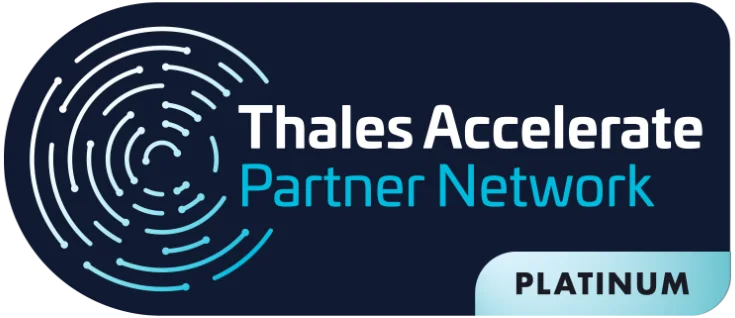The data leak has been highlighted on the main websites and in the news recently. Recently, for example, we saw a major scandal involving Facebook. What struck us most about this leak was how vulnerable we are. In addition, we have seen how damaging this type of situation can be in our lives and also for companies, even those with security policies.
Unfortunately we will always have this risk, but with a few simple actions we can reduce the chances of this happening. In addition, it is possible to minimize the impact on customers when this type of incident occurs.
Awareness is the first step to reducing data leaks
First, let’s talk about awareness. After all, many companies still treat data security with restraint. This type of behavior is common when associated with the need for specialized investments. This is a strategic mistake.
Reality shows that investing in information security is essential, especially at a time when customers are increasingly connected and carrying out financial transactions online.
Before any action or investment is made, awareness is the first step to guaranteeing the security of corporate and customer data.
Therefore, it should be understood that a data leak is an incident that exposes confidential or protected information in an unauthorized way. They cause financial and image damage to companies and individuals.
In addition, data theft can involve personal information, personal identification, trade secrets or intellectual property. The most common types of information in a data leak are the following:
- Credit card numbers;
- Personal identifiers such as CPF and ID;
- Corporate information;
- Customer lists;
- Manufacturing processes;
- Software source code.
Cyber attacks are usually associated with advanced threats aimed at industrial espionage, business interruption and data theft.
How to avoid data breaches and theft
There is no security product or control that can prevent data breaches. This statement may seem strange to those of us who work in technology. After all, what is the point of the various hardware and software assets specific to the security area?
The best ways to prevent data breaches involve good practices and well-known security basics, see examples:
- Continuous vulnerability and penetration testing;
- Application of protections, which includes security processes and policies;
- Use strong passwords;
- Use of secure key storage hardware;
- Use of hardware for key management and data protection;
- Consistent application of software patches for all systems.
Although these steps help prevent intrusions, information security experts such as EVAL encourage the use of data encryption, digital certificates and authentication as part of the set of best practices.
Learn about the other 5 steps to prevent data leaks
The increase in the use of cloud applications and data storage has led to growing concern about data leakage and theft.
For this reason, the steps we are going to describe consider cloud computing as the main IT infrastructure adopted by companies to host their products, services and tools that are part of the production process.
1. Develop a data leak response plan
It may seem strange to recommend a response plan before building security policies and processes, but it will make sense. In fact, there is no right order in which to draw up the documents, not least because the construction will be done by several hands and they are all independent.
A data breach response plan consists of a set of actions designed to reduce the impact of unauthorized access to data and to mitigate the damage caused if a breach occurs.
Within the development process, there are stages which, when well defined, will serve as the basis for drawing up your security policies and processes. To give you an idea, the development of this plan brings us approaches like:
- Business impact analysis;
- Disaster recovery methods;
- Identification of your organization’s confidential and critical data;
- Defining actions for protection based on the severity of the impact of an attack;
- Risk assessment of your IT environment and identification of vulnerable areas;
- Analysis of current legislation on data breaches;
- And other critical points.
We’ve mentioned a few points, but a data breach response plan addresses other areas that also serve as the basis for building security policies.
As we are considering a cloud environment, the strategy to be built into the data breach response plan must involve the cloud infrastructure provider.
It is also worth noting that many of the resources available in the cloud already have their own characteristics that help in the construction and execution of plans.
|
|
2. Have an information security policy that covers data protection
A security policy is generally considered a “living document”, which means that it is never finished, but is continually updated as technology requirements and company strategies change.
A company’s security policy should include a description of how the company protects its assets and data.
This document also provides a definition of how security procedures will be executed and the methods for evaluating the effectiveness of the policy and how the necessary corrections will be made.
It is worth remembering that part of the security policies is the adoption of a term of responsibility signed by employees so that they are committed to information security and the non-leakage of data.
Like the data breach response plan, the security policy is also a broad document with several points, but which have not been described in this article.
3. Make sure you have trained staff
So, as you may know, training is a crucial point in preventing data leaks. Employee training addresses safety on several levels:
- Teach employees about situations that could lead to data leaks, such as social engineering tactics;
- It ensures that data is encrypted as actions are carried out in accordance with security policies and plans;
- It ensures that the processes involved are as dynamic and automatic as possible in order to achieve compliance with legislation;
- It ensures that employees are aware of the importance of information security, reducing the risk of attacks.
4. Adopt effective data protection tools
In a cloud architecture adopted by companies, the existence and use of tools that help guarantee information security is mandatory. In addition to hardware and software assets, resources must be found:
- Tools for monitoring and controlling access to information;
- Tools to protect data in motion (SSL/TLS channel);
- Tools to protect data at rest (in databases and files);
- Tools to protect data in memory;
- Data loss prevention tools (DLP).
In short, the approaches adopted by these tools are useful and mandatory when the aim is to block the exit of confidential information. They are key to reducing the risk of data leakage when managed through cloud infrastructure services.
5. Test your plan and policies, addressing all areas considered to be at risk
Just as the other sections described are important, the value of carrying out checks, as well as validating security policies and plans, makes this last step one of the most critical.
As a result, the company must carry out in-depth audits to ensure that all procedures work efficiently and without room for error. However, for many, the testing stage must be one of the most challenging parts. So the information security area must always seek to prevent data leaks.
On the other hand, it is very difficult to implement all the procedures described. Mainly due to the fact that we have the company’s operations running at full steam.
If not planned correctly, testing can have a major impact on the organization’s routine. However, this validation is fundamental to protecting the company from data leaks and cannot be neglected.
Finally, the steps described in the article will certainly help your company prevent security incidents. Despite their apparent complexity, it is entirely possible to adopt them and succeed in preventing data leaks.
Finally, subscribe to our newsletter and stay up to date with EVAL’s news and technologies. Keep following our content on the blog and take advantage of our Linkedin profile to stay informed.
About Eval
EVAL has been developing projects in the financial, health, education and industry segments for over 18 years. Since 2004, we have offered Authentication, Electronic and Digital Signature and Data Protection solutions. Currently, we are present in the main Brazilian banks, health institutions, schools and universities, and different industries.
With value recognized by the market, EVAL’s solutions and services meet the highest regulatory standards of public and private organizations, such as SBIS, ITI, PCI DSS, and the General Data Protection Law (LGPD). In practice, we promote information security and compliance, increase companies’ operational efficiency, and reduce costs.
Innovate now, lead always: get to know Eval’s solutions and services and take your company to the next level.
Eval, safety is value.







